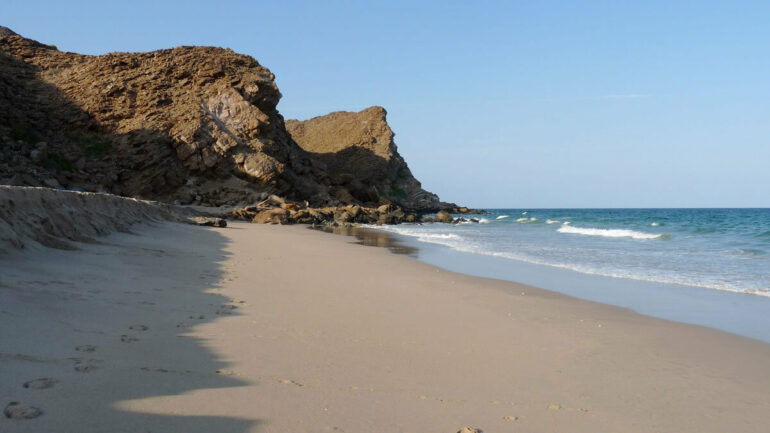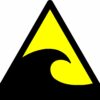At the far edges of continents, where the continental shelf transitions into the deep ocean, continental and oceanic plates come face to face. At many of these margins, the denser oceanic plate is pushed below the continental plate in a process called subduction. However, in some cases, known as obduction, the oceanic plate ends up atop the more buoyant continental plate instead of diving below it.
Obduction zones are unique because they foster the recycling of surface continental material to the deep mantle, which happens infrequently, and they have formed almost exclusively in the past billion years of Earth’s history. The resulting ophiolites—slices of oceanic crust and mantle atop a continental plate—offer uncommon opportunities to view seafloor geology from the comfort of land.
The Samail Ophiolite (Oman–United Arab Emirates), in the northeastern corner of the Arabian Peninsula, is frequently studied as a model of obduction because of its well-exposed and well-studied geology. However, geologists disagree about the timing and geometry of the continental subduction that led to the final emplacement of the ophiolite. Several tectonic models offer hypotheses on the ophiolite’s obduction but differ in their conclusions.
In a new study, Garber et al. sought to clarify the timing of the obduction episode in Oman. The authors sampled several different rocks from As Sifah, an Omani beach with an outcrop of high-grade continental metamorphic rocks subducted beneath the ophiolite. The studied As Sifah rocks reflect a diverse range of lithologies that all experienced the same metamorphic evolution, the authors say. Samarium-neodymium (Sm-Nd) and uranium-lead (U-Pb) radiometric dating on the garnet, zircon, and rutile crystals in the rocks helped determine the age of the subduction event.
The findings provide new constraints on the timing of the obduction of the ophiolitic rocks in Oman. The results indicate that the episode occurred approximately 81–77 million years ago when the Arabian continental plate subducted to the northeast below the Samail Ophiolite. The subduction of the Arabian plate to mantle depths occurred at rates similar to those of other small continental subduction events, and the tectonic evolution appears to be similar to that of other ophiolite formations.
This conclusion refutes previously published estimates that continental subduction in Oman started 110 million years ago and may have occurred over two distinct episodes. Overall, the study provides a meaningful contribution to a long-debated geologic question.
More information:
Joshua M. Garber et al, Dating Continental Subduction Beneath the Samail Ophiolite: Garnet, Zircon, and Rutile Petrochronology of the As Sifah Eclogites, NE Oman, Journal of Geophysical Research: Solid Earth (2021). DOI: 10.1029/2021JB022715
Provided by
American Geophysical Union
This story is republished courtesy of Eos, hosted by the American Geophysical Union. Read the original story here.
Citation:
Radiometric dating sheds light on tectonic debate (2022, January 24)



